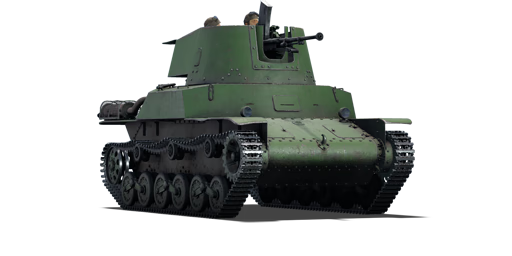




The Experimental Anti-Air Ta-Se was a prototype anti-air vehicle to mechanize the Type 98 20 mm cannon for armoured companies. Early during the design phase, the easy-to-produce Type 94 anti-air truck was developed and took away the priority of further developing the Ta-Se. The Ta-Se was supposed to supplement the Type 98 Ke-Ni and replace the Type 95 Ha-Go; however, it was not formally adopted. In the end, the Army decided it was easier to maintain Type 98 cannons towed behind trucks or use the Type 94 truck as a flatbed than having to adopt and mass produce anti-air tanks to move the same anti-air guns.
It was introduced along with the initial Japanese Ground Forces tree in Update 1.65 "Way of the Samurai". Capable of dispatching airplanes as well as it can destroy tanks, the Ta-Se does it quickly; Being built on top of the Ke-Ni chassis, it maintains its zippy manoeuvrability and thin armour. Crew survivability isn't the best for 3 crew members, with 2 sticking out in the turret, though it can get lucky losing a crew member and continue the fight unlike its German counterparts the Flakpanzer I and Flakpanzer 38 only crewing 2 men.
| Belt | Belt filling | Armor penetration (mm) at a distance: | |||||
|---|---|---|---|---|---|---|---|
| 10 m | 100 m | 500 m | 1000 m | 1500 m | 2000 m | ||
| API-T/HEFI-T/HEFI-T | 48 | 45 | 35 | 26 | 19 | 14 | |
| HEFI-T | 6 | 5 | 4 | 3 | 3 | 3 | |
| API-T | 48 | 45 | 35 | 26 | 19 | 14 | |












Mobility | |
|---|---|
Protection |
|---|
Firepower | |
|---|---|